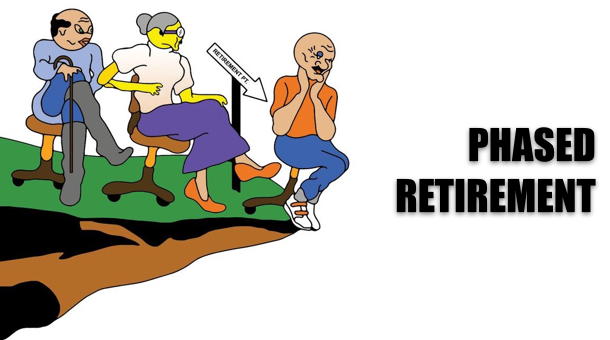How Elder Living is Evolving Part 1
Older people aren’t milk or horses, but we tend to treat them that way: “pasteurizing” elders by removing their essence as they grow old, putting them “out to pasture” like horses, sheep, and other farm animals.
But today, more than ever before, elders are raw, “unpasteurized,” and ready to roll (and rock ‘n’ roll!).
Aging Alchemy
What’s the key to staying unpasteurized and active in “the field”, rather than the pasture? Where we choose to place our focus, says preventive medicine physician Roger Landry.
The author of Live Long, Die Short says there is an alchemy of aging, where we can spin our “human capital” into societal gold. Seniors are the only growing global natural resource, agrees Mark Freedman of Encore.org, and we cannot waste them — personally, and as a society.
By 2050, an estimated one in five Americans will be over 65. A landmark ten-year study by the MacArthur Foundation revealed that 70 percent of physical aging and approximately 50 percent of mental aging is determined by the lifestyle choices we make every day — which allows a huge margin for change. Yet too many of us (except, of course, for HECM professionals) focus on anti-aging rather than positive aging, says geriatrician Bill Thomas.
Elderhood Rising: The Dawn of a New World Age
An author, entrepreneur, musician, teacher, farmer and physician whose wide-ranging work explores the terrain of human aging, Thomas founded The Green House®, a new standard in long-term care that reinvents the nursing home. Thomas has been traveling the country with his “Age of Disruption Tour,” a nonfiction theater performance where people engage with the stage to shift perception about age! This TED talk is a taste of his work: embracing elderhood as a stage beyond adulthood, rather than becoming “developmentally disabled” about growing older.
Like Thomas, Dr. Jonathan Collie is committed to changing the narrative of aging, from one of dependence and decline to exploration and optimism. A passionate social entrepreneur, Collie created The Age of No Retirement and just launched In Common, an intergenerational research and storytelling exchange platform. “Sharing experiences and ideas is the only way we can innovate together and bridge understanding,” he says.
Yeager-ing Through Life
Landry understands this philosophy well.
An Air Force flight surgeon for more than 22 years, he met world-famous test pilot Chuck Yeager when he (Landry) was just 30 years old. Yeager gave Landry a profound lesson in aging paradigms by declaring he would break the sound barrier on the 50th anniversary of when he did it the first time — at age 73.
Landry says, “Most of us should be “Yeager-ing through life,” which anyone considering a reverse mortgage can take to heart as they contemplate the years to come. This human capital needs to be recognized, appreciated and used, Landry, Collie, and Thomas agree — not by pasteurizing older adults, but through encouraging elders to continue to contribute and grow , physically, mentally, and spiritually.

Toward this end, Landry leads Masterpiece Living (MPL), which partners with more than 80 organizations to maximize senior potential. MPL combines a cultural approach with measurable outcomes for successful aging, based on the belief that more is possible as we age.
MPL introduced the groundbreaking Center for Successful Aging Certification (CSA) in order to distinguish the best successful aging destinations in the country. Currently, sixteen locations hold the designation, which Landry describes as “a fundamental change in how we look at living in later life.” Each Center for Successful Aging acknowledges, facilitates, and measures what happens in its community, so it becomes a resource for policy change and outreach for those who are aging in place.
Euphoria is Just Around the Corner
Perhaps the best indication of how deeply a complete cultural reorientation is needed comes from elder response to Gen X and Millennial innovation, such as Starts at 60, Australia and New Zealand’s largest digital media platform for those 60 plus. Known for “driving voracious social conversations between ‘over sixties’ online seven days a week, 365 days a year,” it’s exceeded even founder Rebecca Wilson’s wildest expectations.
That’s not surprising, considering how Wilson perceives elderhood. Bill Thomas would adore her. This Boomer daughter delineates the Three Stages of Retirement as:
- Pre-Euphoria: Planning for retirement. Peer-to-peer conversations crucial in every stage.
- Euphoria: Being in retirement — no kids, no job, freedom! Time to enjoy health and wealth, travel. (Her 70-year-old dad is learning to waterski.)
- Post-Euphoria: Start to put down roots again. Get involved in local community.
If most Millennials and those who follow are as aging-enlightened as Wilson, we can look forward to a sea change in elder service consciousness!










 And in today’s economy, businesses want to keep elder workers and their decades of accumulated business acumen on the job a little longer. They’ve evolved a way to do so that serves everyone involved. It’s known as
And in today’s economy, businesses want to keep elder workers and their decades of accumulated business acumen on the job a little longer. They’ve evolved a way to do so that serves everyone involved. It’s known as 
 But in China, people of all ages — especially elders — start their day with flowing movement meditations known as tai chi and qigong, often in the local park. Chinese residents by the millions practice these ancient healing arts for stilling the mind and strengthening the body.
But in China, people of all ages — especially elders — start their day with flowing movement meditations known as tai chi and qigong, often in the local park. Chinese residents by the millions practice these ancient healing arts for stilling the mind and strengthening the body.